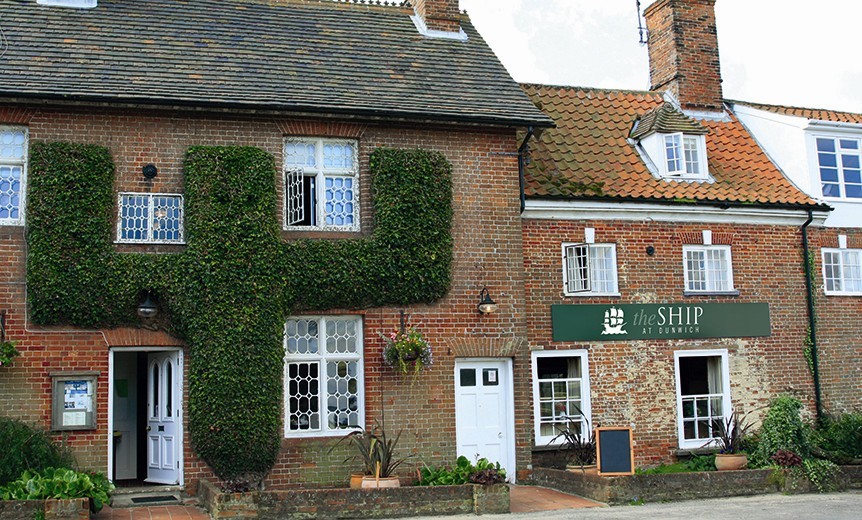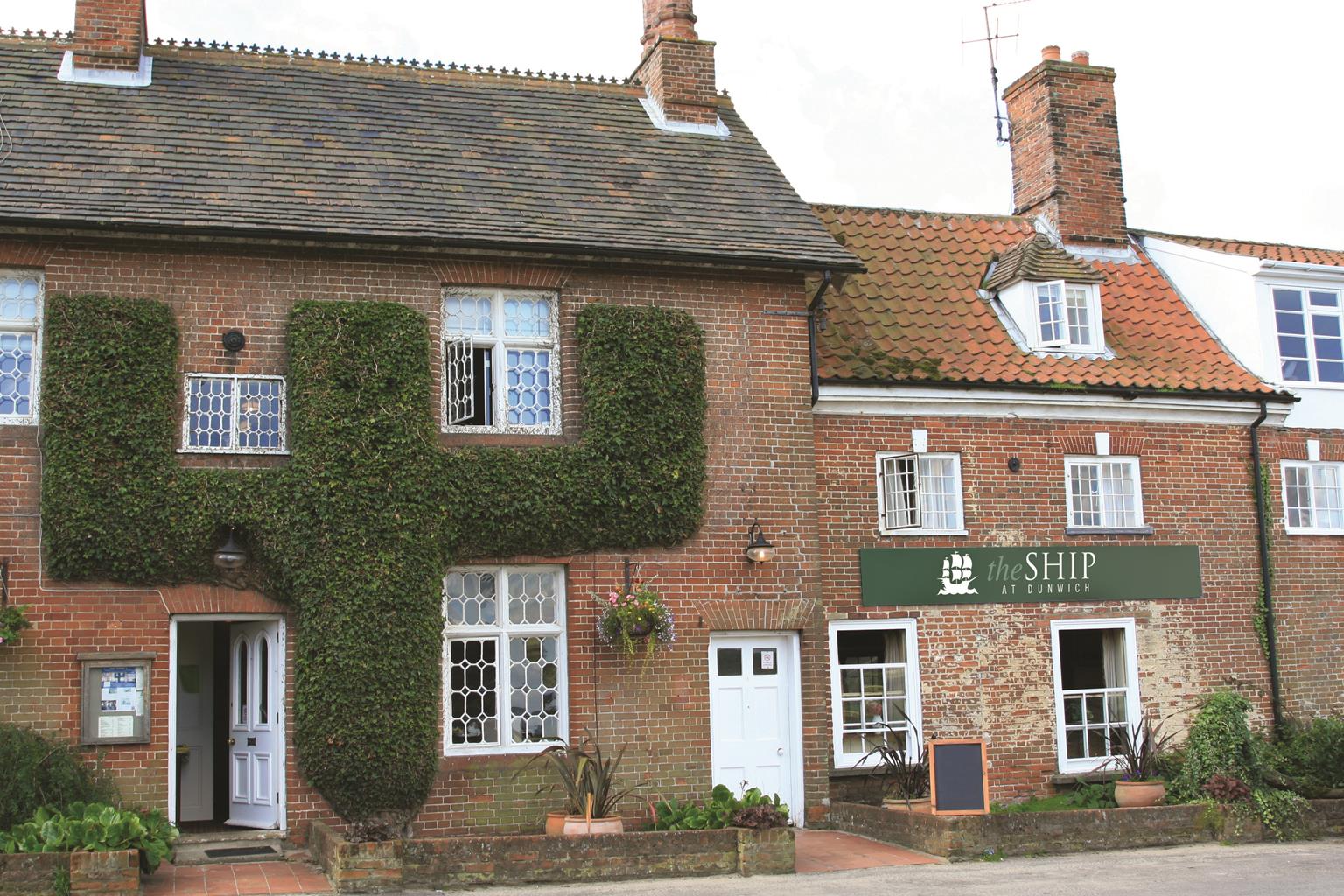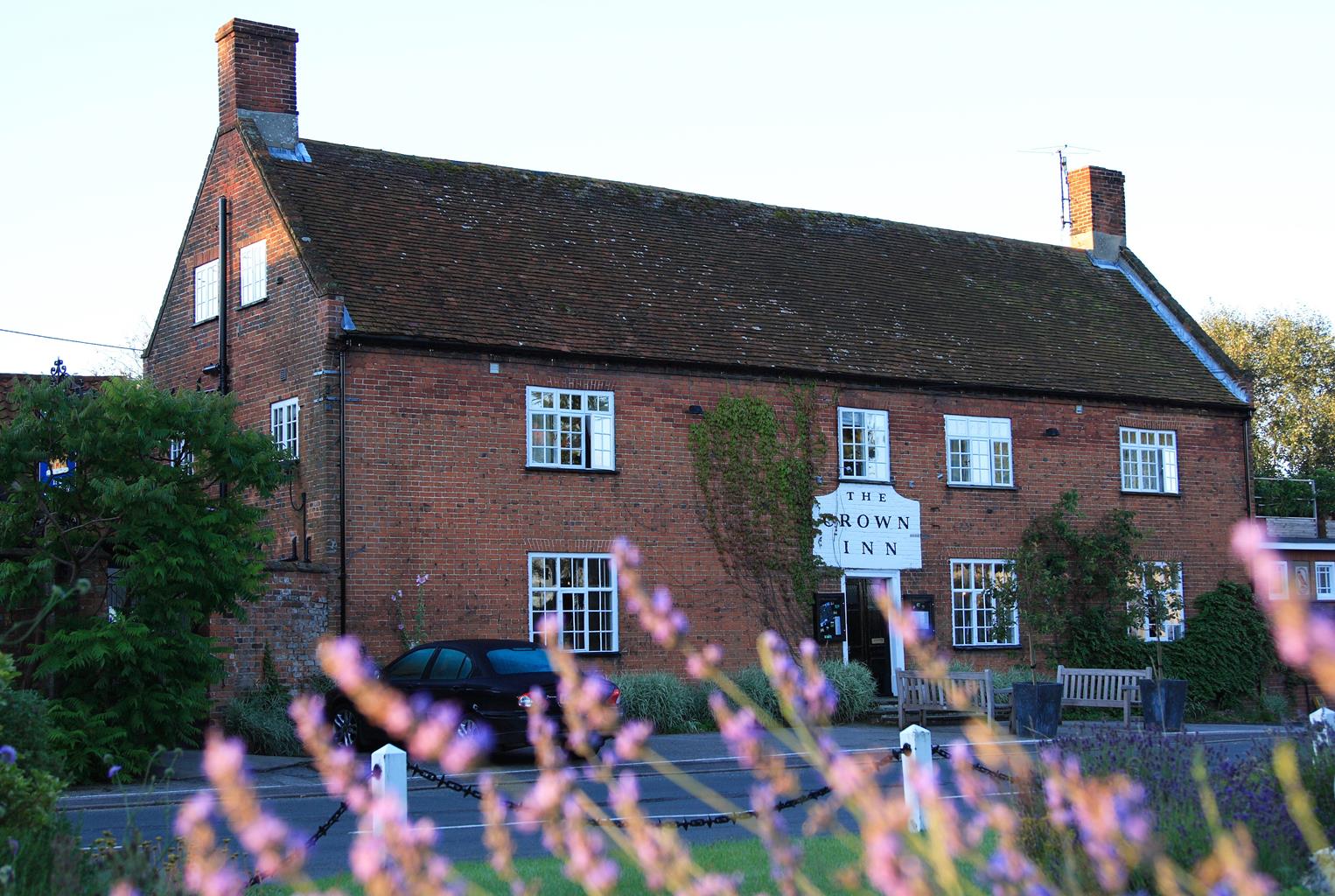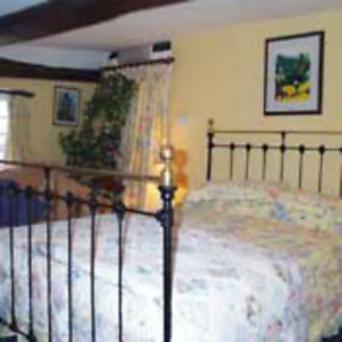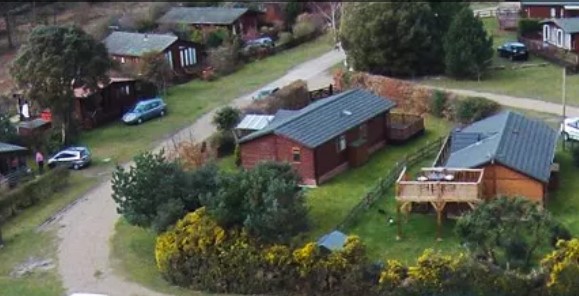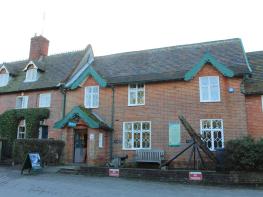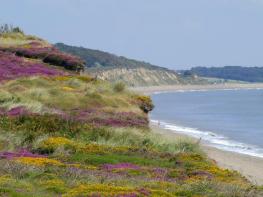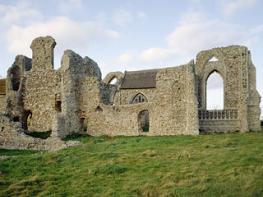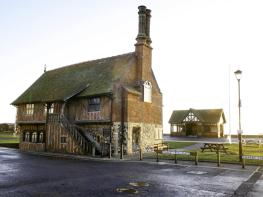The Ship at Dunwich is a delightful inn situated in the heart of a quiet village, surrounded by…
The ghosts of Dunwich

Conjure up visions of a lost city as you stand on the cliffs gazing out to sea.
9 miles (14.5kms)
About the walk
Medieval Dunwich was a splendid city and a major seaport that exported wool and grain to Europe and imported cloth and wine. It had six churches plus numerous chapels, convents, monasteries, hospitals, alehouses, farmhouses and mills. Now it is a small seaside village with a handful of houses and a pub. So where has it gone? The answer is that, like so much of the Suffolk coast, it has simply vanished into the sea.
The sea has been the making and breaking of Dunwich. It was the sea that provided the very reason for its existence and supported its industries of shipbuilding and fishing. It was the sea that brought its most famous figure, St Felix of Burgundy, a missionary invited by King Sigebert, to preach Christianity to the pagans of East Anglia and rewarded with a bishopric and a cathedral at Dunwich in ad 630. It was the sea that silted up the harbour during a terrible storm in 1286, leading to the city's inevitable decline. And it is the sea, ever since, which has taken Dunwich back, a process which continues at the rate of around 1yd (1m) each year as the tides chip away at the base of the cliffs. A scale model of the 12th-century city, housed in Dunwich Museum, reveals the full truth about its decline. The Roman town here extended 1 mile (1.6km) out to sea beyond the present coastline. Half of this had disappeared by the time of the Norman conquest but the worst was yet to come. The last church tumbled over the cliffs as recently as 1920 and the museum has a series of dramatic photographs showing it collapsing year by year. According to a local legend, you can still hear the bells of the sunken churches pealing beneath the sea on a stormy night.
This walk also takes you to Dunwich Heath, where the National Trust manages some 215 acres (87ha) of sandy cliffs and a mile (1.6km) of beach as a conservation area. The area was once part of the extensive Sandlings Heaths and consists of miles of excellent walks and tracks through open heathland. It borders the RSPB's Minsmere Nature Reserve and the shady woods and expanses of heather attract a wealth of birdlife, including Dartford warblers and nightjars. Come, if you can, between June and September, when the heathland on the cliff top is carpeted with glorious purple and pink heather.
Walk directions
Walk up the road from the beach car park and keep left at the junction. When the road bends, turn left on to a footpath that climbs through the woods to the ruins of Greyfriars Friary. Follow this path, ignoring turnings off, then go under an arch and come out onto a track that leads to a road.
Turn left along the road then turn left off it after 100yds (91m) on a track to the Dairy House. Keep straight ahead on this path as it enters Greyfriars Wood and continues to a road.
Turn left and walk along this road for 0.5 mile (800m), passing two caravan sites on the left. As soon as you enter National Trust land, turn left on to a path, ignoring the path off towards the cliffs soon afterwards.
Walk around the National Trust's Coastguard Cottages and take the track beside Heath Barn field centre, then bear right on to a sandy path that climbs through the heather. Keep on this path, bearing left and right at a crossing track to follow the Sandlings Walk nightjar waymarks. When you reach a bridleway, keep straight ahead on a farm track passing Mount Pleasant farm. Cross the road and keep straight ahead on a gravel and grass lane to Sandy Lane Farm.
Turn right for 0.5 mile (800m) on a shady bridleway to emerge by St James's Church, built in the 19th century when Dunwich's other churches were falling into the sea. (For a short cut, keep straight ahead here to return to Dunwich.)
Turn left at the road and, in 100yds (91m), go right at Bridge Nurseries and Café. Keep to the right around the farm buildings and stay on this track for 1.5 miles (2.4km) beside Dunwich Forest before turning seawards. Pass through a gate to enter a covert and fork right at a junction just before Great Dingle Farm, then follow the path through the reed beds and a gate towards the sea.
Turn right at a junction when you see an old drainage mill to your left, and follow the flood bank across Dingle Marshes. Turn right to return to Dunwich along the beach or take the path behind the shingle bank.
Additional information
Farm tracks, heathland paths, quiet roads, shingle beach
Heathland, woodland, farmland, marshes and coast
On lead on National Trust land and Dingle Marshes
OS Explorers 212 Woodbridge & Saxmundham; 231 Southwold & Bungay
Dunwich Beach free car park
At car park and near NT tea room at Field Centre
WALKING IN SAFETY
Read our tips to look after yourself and the environment when following this walk.
Find out more
Also in the area
About the area
Discover Suffolk
Suffolk is Constable country, where the county’s crumbling, time-ravaged coastline spreads itself under wide skies to convey a wonderful sense of remoteness and solitude. Highly evocative and atmospheric, this is where rivers wind lazily to the sea and notorious 18th-century smugglers hid from the excise men. John Constable immortalised these expansive flatlands in his paintings in the 18th century, and his artwork raises the region’s profile to this day.
Walking is one of Suffolk’s most popular recreational activities. It may be flat but the county has much to discover on foot – not least the isolated Heritage Coast, which can be accessed via the Suffolk Coast Path. Southwold, with its distinctive, white-walled lighthouse standing sentinel above the town and its colourful beach huts and attractive pier features on many a promotional brochure. Much of Suffolk’s coastal heathland is protected as a designated Area of Outstanding Natural Beauty and shelters several rare creatures including the adder, the heath butterfly and the nightjar. In addition to walking, there is a good choice of cycling routes but for something less demanding, visit some of Suffolk’s charming old towns, with streets of handsome, period buildings and picturesque, timber-framed houses.
Nearby stays
Restaurants and Pubs
Nearby experiences
Recommended things to do
Why choose Rated Trips?
Your trusted guide to rated places across the UK
The best coverage
Discover more than 15,000 professionally rated places to stay, eat and visit from across the UK and Ireland.
Quality assured
Choose a place to stay safe in the knowledge that it has been expertly assessed by trained assessors.
Plan your next trip
Search by location or the type of place you're visiting to find your next ideal holiday experience.
Travel inspiration
Read our articles, city guides and recommended things to do for inspiration. We're here to help you explore the UK.






